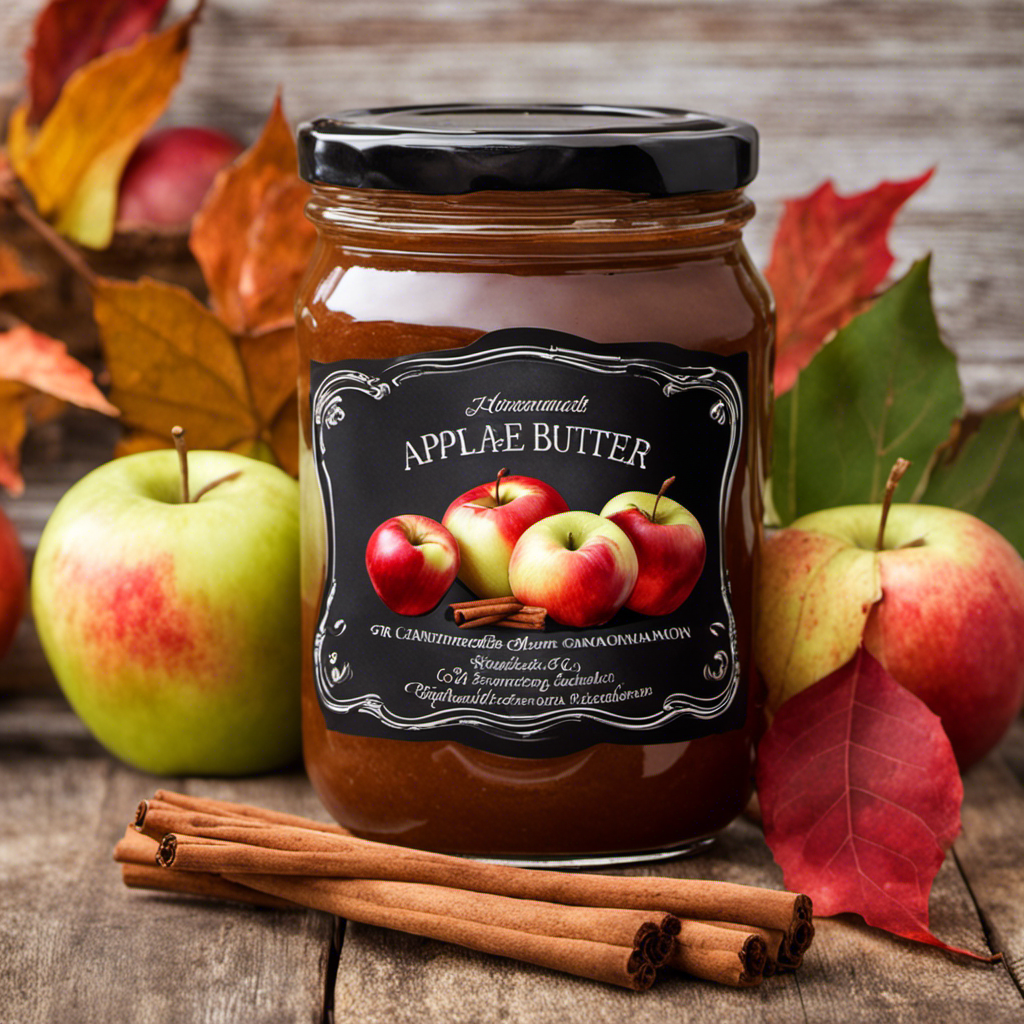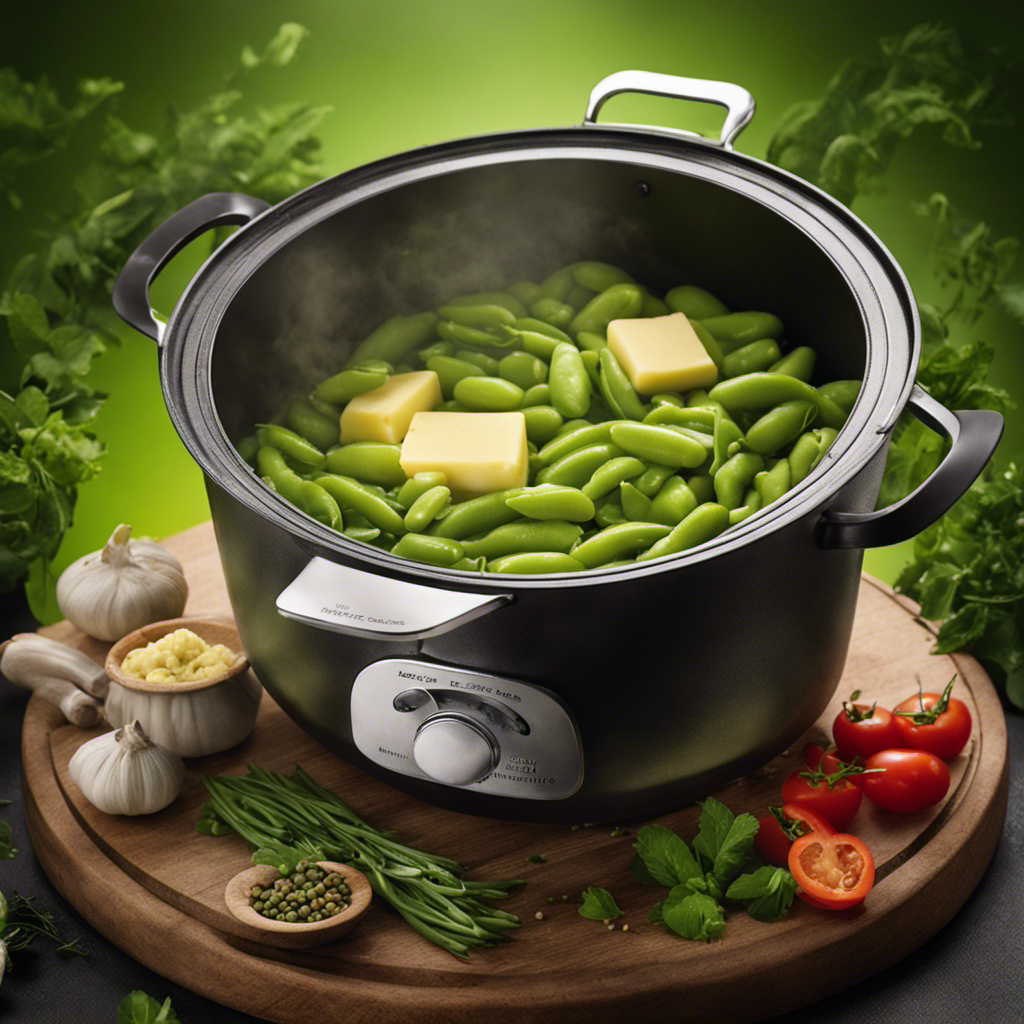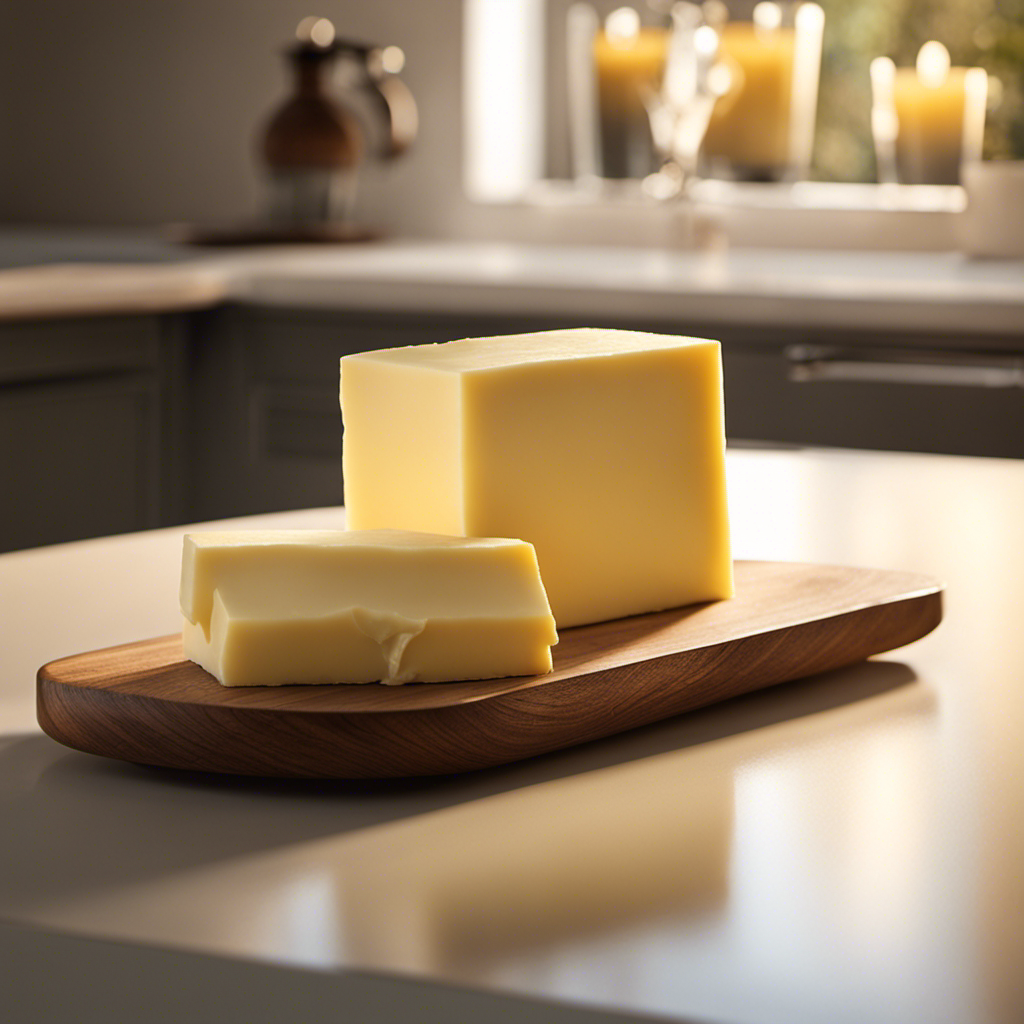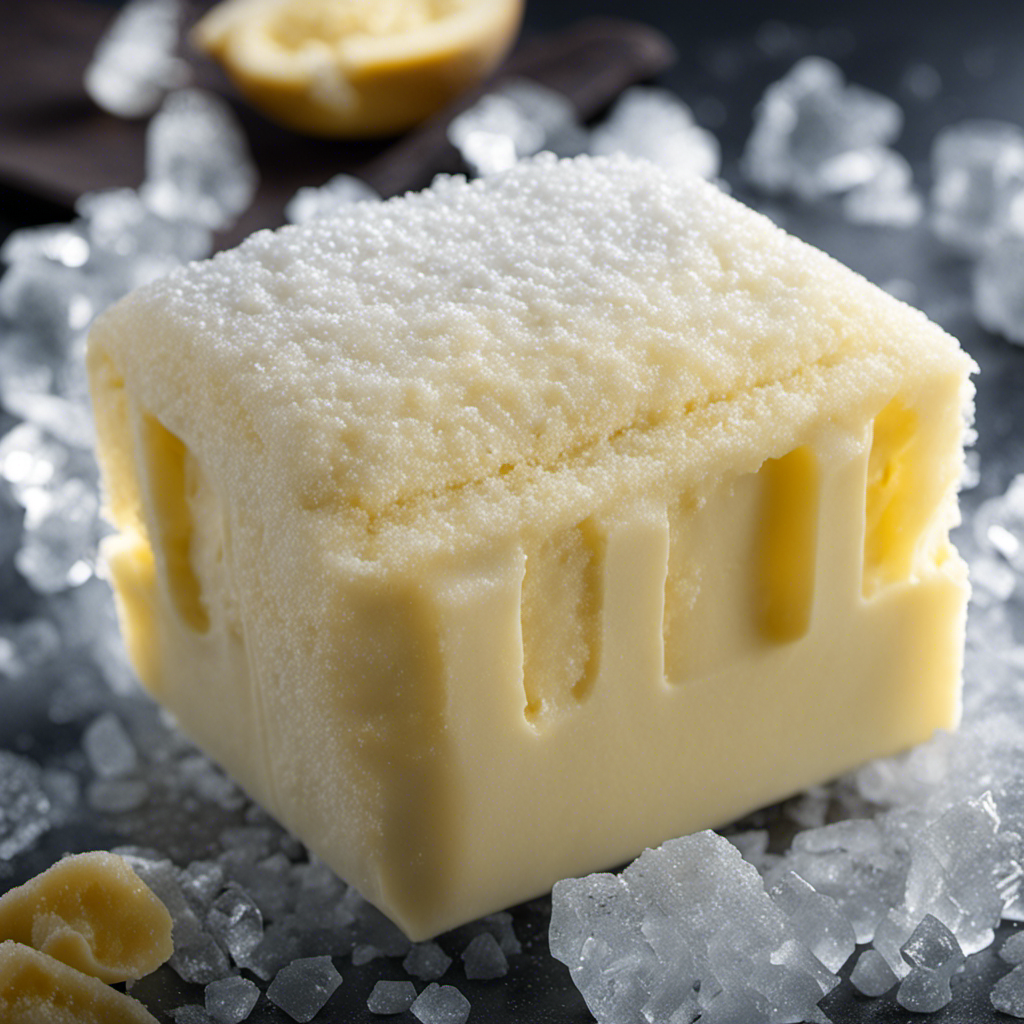As someone who loves apple butter, I frequently question how long homemade apple butter lasts. But fret not, my fellow apple enthusiasts, as I have thoroughly researched this topic and found the answers.
In this article, I will explore the factors that affect the shelf life of apple butter, proper storage techniques, and even some safety precautions for preserving this delectable spread.
So, let’s dive in and discover how to extend the lifespan of our beloved homemade apple butter!
Key Takeaways
- Homemade apple butter typically lasts 2-3 months when stored properly.
- Storing apple butter in airtight containers in a cool, dark place helps preserve its quality and flavor.
- Preservatives or natural alternatives like lemon juice can be used to extend the shelf life of apple butter.
- Quality ingredients and careful selection ensure the best taste and texture in apple butter.
Shelf Life of Homemade Apple Butter
Homemade apple butter is typically good for about 2-3 months when stored properly. There are several factors that can affect the spoilage of apple butter.
One of the main factors is the presence of air. Oxygen can cause the apple butter to oxidize and spoil faster. It is important to store the apple butter in airtight containers to prevent this.
Another factor is temperature. Apple butter should be stored in a cool and dark place, away from direct sunlight and heat sources. High temperatures can speed up the spoilage process.
The best storage containers for apple butter are glass jars with tight-fitting lids. These containers are non-reactive and provide a good seal to keep air out.
Proper storage is key in ensuring the longevity of homemade apple butter.
Factors Affecting the Shelf Life of Apple Butter
When it comes to the shelf life of apple butter, there are several factors to consider.
First, the storage conditions play a crucial role in determining how long the apple butter will last.
Additionally, the use of preservatives can significantly extend the lifespan of the product.
Lastly, the quality of ingredients used in making the apple butter also matters as it can affect the overall longevity of the product.
Storage Conditions Impact Shelf Life
Proper storage conditions can greatly impact the shelf life of apple butter. The temperature at which it is stored plays a crucial role in its spoilage. Apple butter should be stored in a cool, dry place, away from direct sunlight and heat sources.
High temperatures can cause the butter to spoil quickly, leading to a shorter shelf life. It is best to store apple butter in airtight containers to prevent exposure to air and moisture. Glass jars with tight-fitting lids or plastic containers with secure seals work well for this purpose. These containers help preserve the freshness and flavor of the apple butter for a longer period.
Preservatives Extend Product Lifespan
Preservatives can help extend the lifespan of commercially-produced apple butter. In store-bought apple butter, preservatives are commonly used to prevent spoilage and maintain freshness. Here are some key points to consider about preservatives in store-bought apple butter:
- Preservatives play a crucial role in prolonging the shelf life of apple butter by inhibiting the growth of bacteria, yeast, and mold.
- Common preservatives found in store-bought apple butter include sorbic acid, potassium sorbate, and sodium benzoate.
- While preservatives are effective in extending the lifespan of apple butter, some people prefer to avoid them due to potential health concerns.
However, if you prefer a more natural approach to preserving apple butter, there are alternatives to consider:
- Using natural preservatives like lemon juice or apple cider vinegar can help inhibit microbial growth.
- Proper canning techniques, such as hot water bath canning, can also effectively preserve apple butter without the need for additives.
- Storing apple butter in airtight containers and refrigerating it can help maintain its quality and freshness for a longer period.
Ultimately, the choice between using preservatives or natural alternatives for preserving apple butter depends on personal preferences and dietary considerations. Transitioning into the subsequent section, it is worth noting that the quality of ingredients used in homemade apple butter also plays a significant role in its longevity.
Quality of Ingredients Matters
To ensure your store-bought apple butter has the best taste and texture, it is important to carefully select high-quality ingredients. The quality of ingredients greatly affects the overall quality of the apple butter.
When making homemade apple butter, you have the advantage of handpicking the freshest apples and other ingredients. This allows you to control the flavor and ensure that only the best goes into your recipe.
Store-bought apple butter, on the other hand, may contain preservatives and additives to prolong its shelf life. While these preservation techniques extend its lifespan, they can also impact the taste and texture.
Storing Homemade Apple Butter
If you want to keep your homemade apple butter fresh, make sure you store it in a cool, dark place. Storing apple butter long term requires proper storage techniques to maintain its flavor and texture. Here are some tips to help you store your homemade apple butter effectively:
-
Use clean, airtight jars: Reusing apple butter jars is a great way to store your homemade apple butter. Just make sure to clean them thoroughly before filling them with fresh batches.
-
Label the jars: Properly labeling the jars with the date of preparation will help you keep track of the freshness and ensure you use the oldest batch first.
-
Store in a cool, dark place: Exposure to heat and light can cause the apple butter to spoil quickly. Find a cool, dark place in your pantry or cupboard to store the jars.
Properly Sealing and Labeling Apple Butter Jars
When properly sealed and labeled, jars of apple butter can be stored for an extended period. Properly labeling homemade apple butter and following best practices for sealing apple butter jars are crucial to ensure its longevity. Here are some tips for sealing and labeling apple butter jars effectively:
| Sealing Apple Butter Jars | Labeling Apple Butter Jars |
|---|---|
| Use clean and sterilized jars | Include the date of preparation |
| Fill the jars leaving 1/4 inch headspace | Write the contents and flavor |
| Wipe the jar rims before sealing | Add any special ingredients |
| Apply hot lids and screw bands tightly | Mention any dietary restrictions |
| Process in a boiling water bath | Indicate if it’s homemade or store-bought |
| Allow jars to cool and check for seals | Include your name or initials |
Following these best practices will help maintain the quality and safety of your homemade apple butter. Enjoy the delicious taste of apple butter all year round by properly sealing and labeling your jars.
Refrigerating Apple Butter: How Long Does It Last
Refrigerating apple butter can help extend its shelf life. When it comes to storing homemade apple butter, refrigeration is key. Here are a few things to keep in mind:
-
Temperature: Store apple butter in the refrigerator at a temperature below 40°F (4°C) to prevent spoilage and maintain freshness.
-
Container: Transfer the apple butter into a clean, airtight jar or container before refrigerating to keep it fresh and prevent any cross-contamination.
-
Duration: Refrigerated apple butter can last for up to 2 to 3 months if stored properly.
Freezing Homemade Apple Butter
After learning about how long homemade apple butter can last in the refrigerator, I want to explore another option: freezing apple butter.
Freezing is a great way to extend the shelf life of apple butter even further. To freeze apple butter, you’ll need to transfer it to a suitable container. The best containers for freezing apple butter are airtight containers or freezer-safe glass jars. Make sure to leave some headspace in the container to allow for expansion during freezing.
It’s also a good idea to label the containers with the date of freezing for easy reference later on. When you’re ready to enjoy your frozen apple butter, simply thaw it in the refrigerator overnight or at room temperature.
Freezing is a convenient method to preserve the deliciousness of homemade apple butter for an extended period.
Safety Precautions for Preserving Apple Butter
To ensure the safety of preserving apple butter, it’s important to follow proper guidelines and techniques. Here are some key safety precautions to consider:
- Wash your hands thoroughly before handling any ingredients or equipment to prevent bacterial growth.
- Use clean, sterilized jars and lids for canning to avoid contamination.
- Follow proper canning techniques, including using a water bath or pressure canner to kill any bacteria that may be present.
By taking these precautions, you can effectively prevent bacterial growth and extend the shelf life of your homemade apple butter.
However, it’s important to note that even with proper preservation techniques, apple butter may still spoil over time. In the next section, we will discuss the signs of spoiled apple butter and how to identify them.
Signs of Spoiled Apple Butter
When it comes to apple butter, it’s important to know how to identify if it has gone bad. There are a few key indicators to look out for, such as changes in color, texture, and smell.
It’s crucial to be able to recognize these signs to ensure safe consumption of apple butter.
Identifying Spoiled Apple Butter
If your homemade apple butter has an off smell or mold, it’s likely spoiled. Identifying signs of spoiled apple butter is crucial to ensuring safe consumption. Here are some indicators to look out for:
- Color: If the apple butter has turned darker or has developed a greenish tint, it may be spoiled.
- Texture: Spoiled apple butter can become watery or develop a slimy texture.
- Taste: If the apple butter tastes sour or has an off-flavor, it is a clear sign of spoilage.
To ensure safe consumption, follow these guidelines:
- Check the expiration date: Homemade apple butter usually lasts for around 2-3 months when stored properly in a cool, dry place.
- Inspect the jar: If the lid is bulging or damaged, it may indicate bacterial growth.
- Trust your senses: If the apple butter smells strange or looks abnormal, it’s best to discard it.
Safe Consumption Indicators
By checking the expiration date and inspecting the jar, you can determine if your homemade apple butter is safe to consume.
When it comes to apple butter storage, it’s important to keep it in a cool, dry place away from direct sunlight. This will help maintain its quality and extend its shelf life.
Once opened, homemade apple butter can be stored in the refrigerator for up to 2 to 3 weeks. However, it’s crucial to look for any signs of spoilage before consuming.
If the apple butter has an off odor, unusual texture, or mold growth, it’s best to discard it. Additionally, if the jar is swollen or the lid is bulging, it could be a sign of bacterial growth, and the apple butter should not be consumed.
Extending the Shelf Life of Homemade Apple Butter
To extend the shelf life of homemade apple butter, it’s important to properly store it in airtight containers. Here are some homemade preservation techniques that can help prolong the freshness of your apple butter:
-
Choose high-quality apples: Selecting fresh and ripe apples will result in a better quality apple butter that lasts longer.
-
Cook it thoroughly: Ensure that your apple butter is cooked to the right consistency, as this helps to kill any bacteria or microorganisms that could cause spoilage.
-
Sterilize the containers: Before filling them with apple butter, sterilize the containers to eliminate any potential contaminants.
Frequently Asked Questions
Can Homemade Apple Butter Be Stored at Room Temperature?
Yes, you can store homemade apple butter at room temperature, but it’s best to store it in the fridge. The shelf life of homemade apple butter is about 2 weeks when refrigerated.
Can I Reuse the Jars for Storing Apple Butter?
I can reuse jars for storing apple butter, but it’s important to consider the shelf life. Homemade apple butter is good for up to one year when stored properly in sealed jars.
Can Apple Butter Be Preserved Without Using Sugar?
Preserving apple butter without sugar is possible by using alternative sweeteners like honey or maple syrup. These natural sweeteners can provide a similar taste while avoiding the use of refined sugar.
Can I Add Spices or Other Flavors to Homemade Apple Butter?
Yes, you can add various spices and flavors to homemade apple butter to enhance its taste. You can experiment with cinnamon, nutmeg, cloves, or even vanilla extract. This allows you to make flavored apple butter without adding sugar.
Can Apple Butter Be Made Using Different Types of Apples?
Different types of apples can be used to make apple butter, but certain varieties like Granny Smith or Jonathan are best for their tartness and flavor. Experiment to find your favorite combination!
Conclusion
As I seal the jars of homemade apple butter, I can’t help but feel a sense of accomplishment and satisfaction. The sweet aroma fills the kitchen, transporting me to memories of crisp autumn days and cozy evenings by the fire.
This golden goodness is not just a delicious treat, but a symbol of time and effort, a labor of love. With proper storage and care, this homemade apple butter can last for months, allowing us to savor the flavors and hold onto those cherished moments just a little bit longer.










